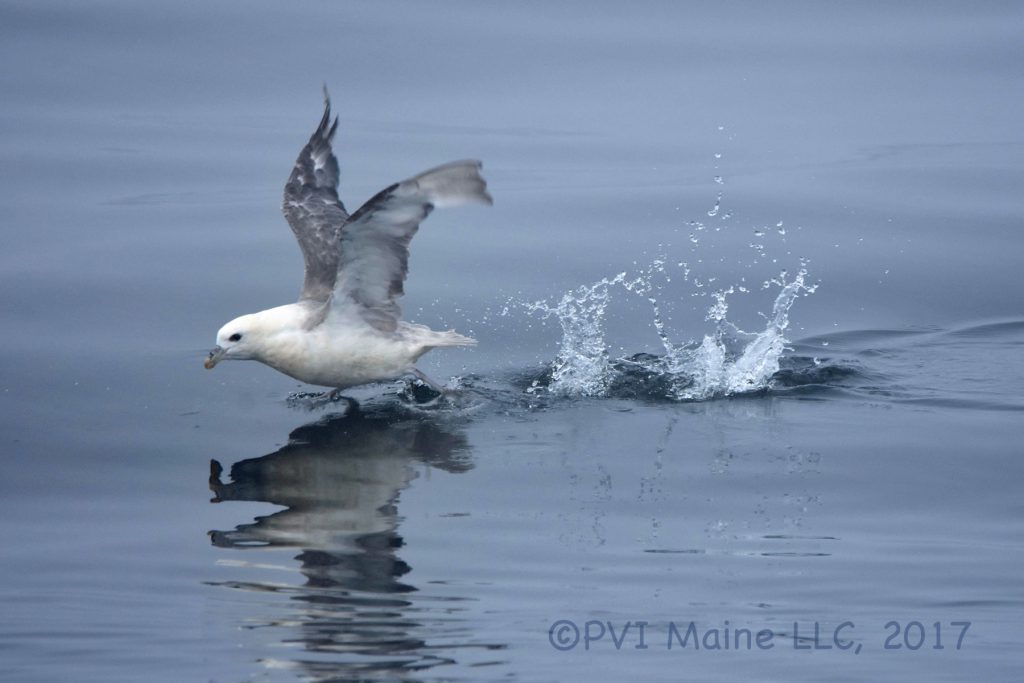
The Northern Fulmar is a medium-sized seabird that can be found in the northern hemisphere. They typically measure around 18 inches in length with a wingspan of 44 inches. Northern Fulmars are fairly heavy birds, weighing in at around 1.5 pounds. They have a stocky body shape and a blunt bill that sets them apart from other seabirds.

The most distinguishing field mark of the Northern Fulmar is their pale grey plumage with darker wingtips. They also have a distinctive black patch at the base of their bill which makes them easily identifiable. Their wings are relatively short and rounded, allowing them to maneuver well in the wind and rough seas.
Northern Fulmars are highly migratory birds, spending their breeding season in the Arctic and sub-Arctic regions before moving south for the winter. They can be found along the coastlines of Alaska, Canada, Greenland, and Russia during their breeding season, where they nest in large colonies on rocky cliffs. During the winter months, they migrate as far south as the coast of California and the Gulf of Mexico.
In addition to their distinctive appearance and migratory behavior, Northern Fulmars are also known for their unique feeding habits. They are opportunistic feeders, preying on a variety of marine animals including squid, fish, and krill. They also scavenge for food, following fishing vessels and feeding on the scraps and discards that are thrown overboard.

Despite their widespread distribution and abundance, Northern Fulmars face a number of threats including pollution, overfishing, and climate change. These threats can impact their food sources and nesting sites, ultimately leading to declines in population size. As such, conservation efforts are crucial to ensuring the long-term survival of this fascinating seabird.

